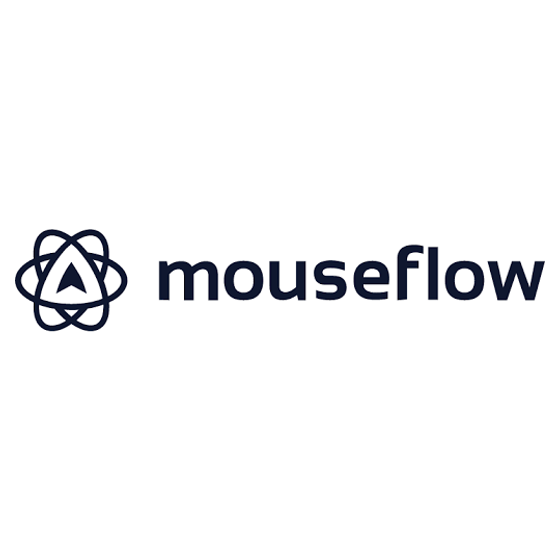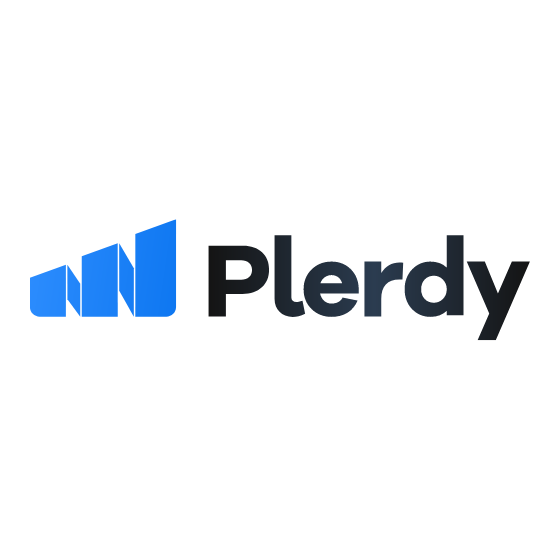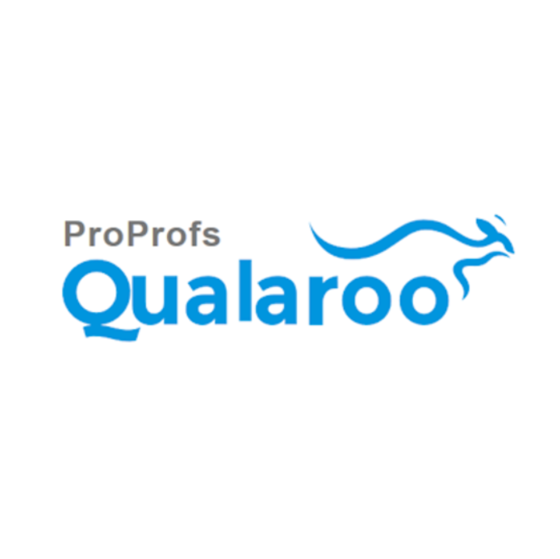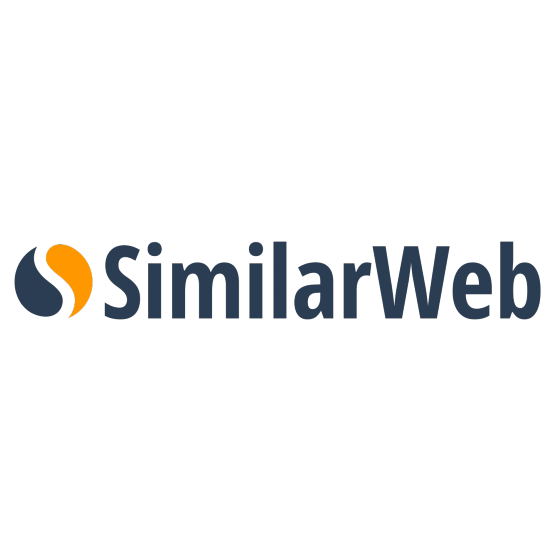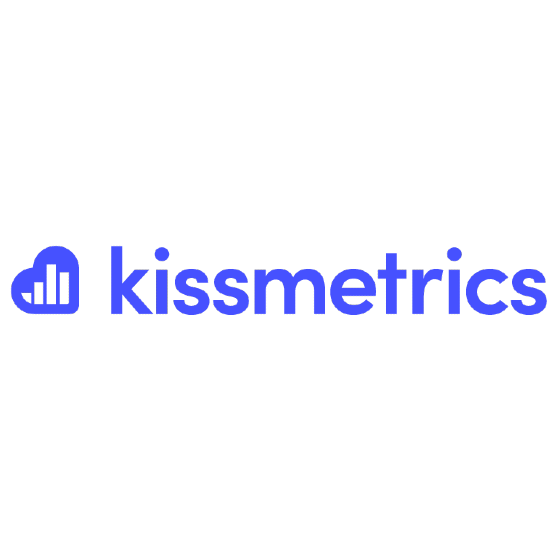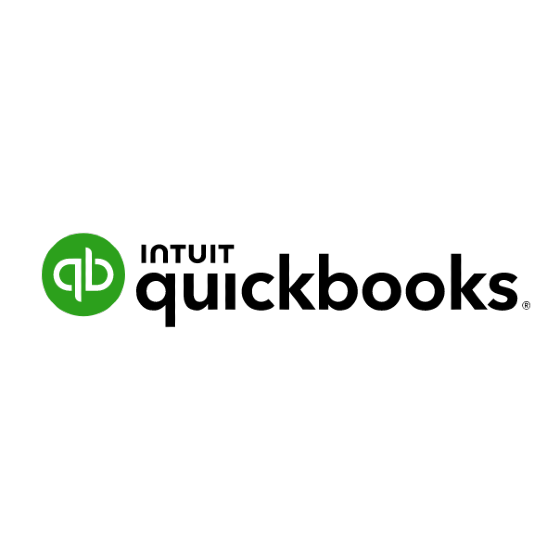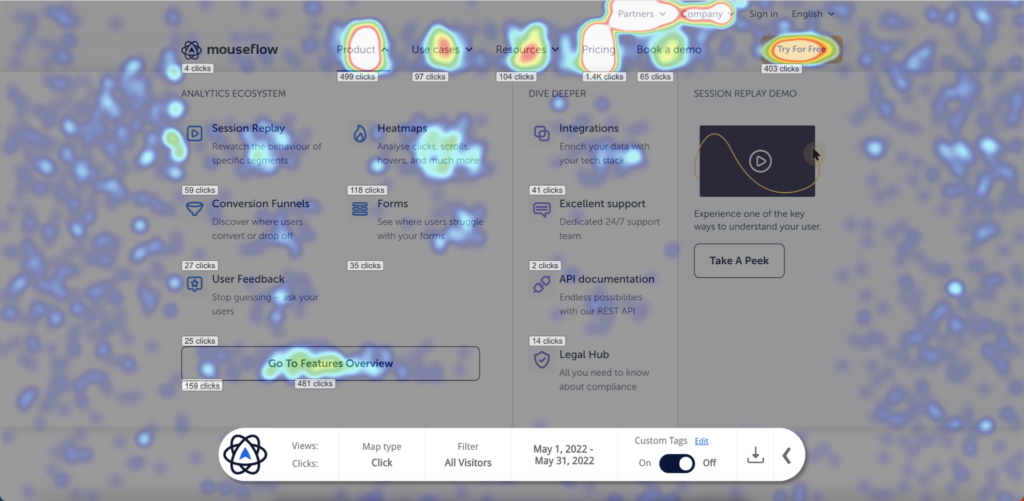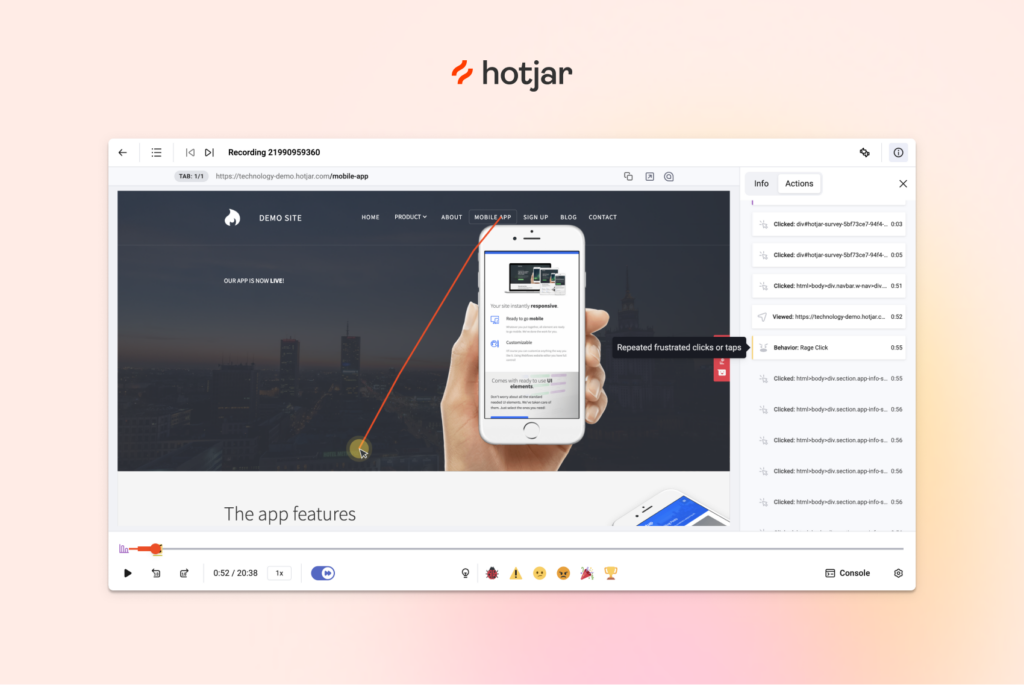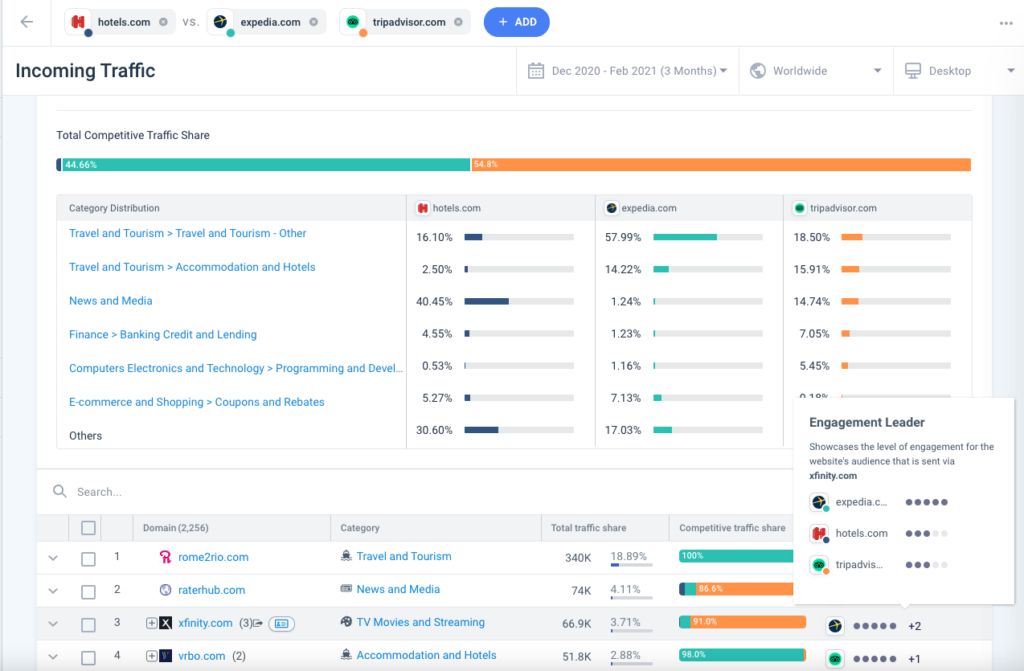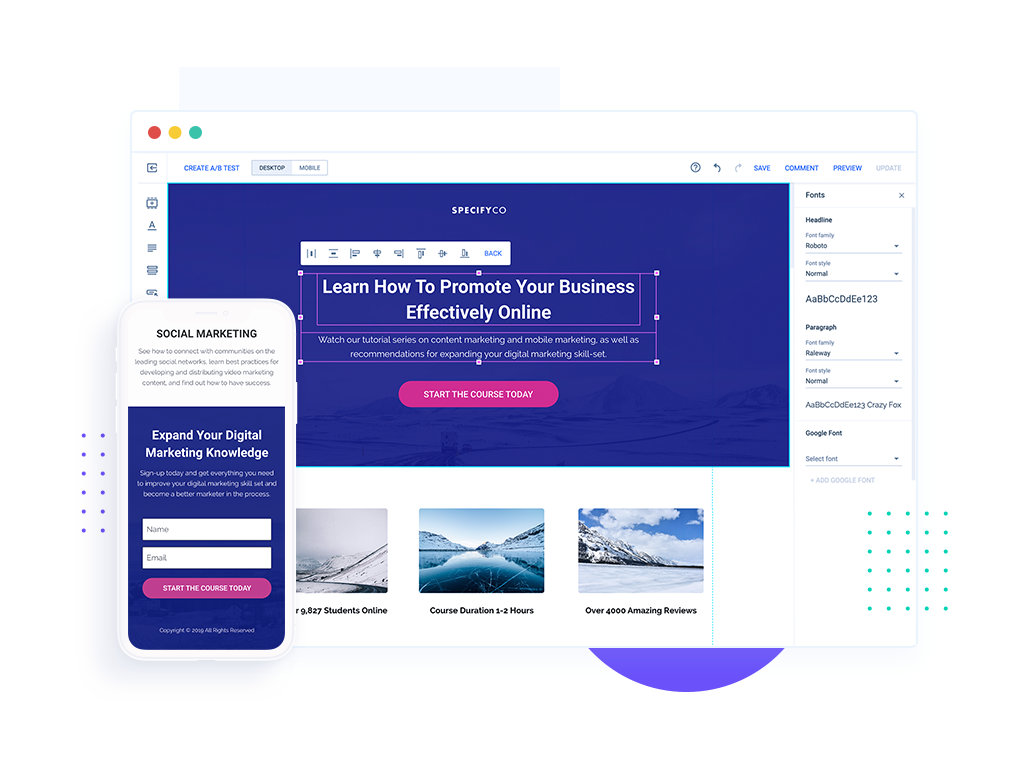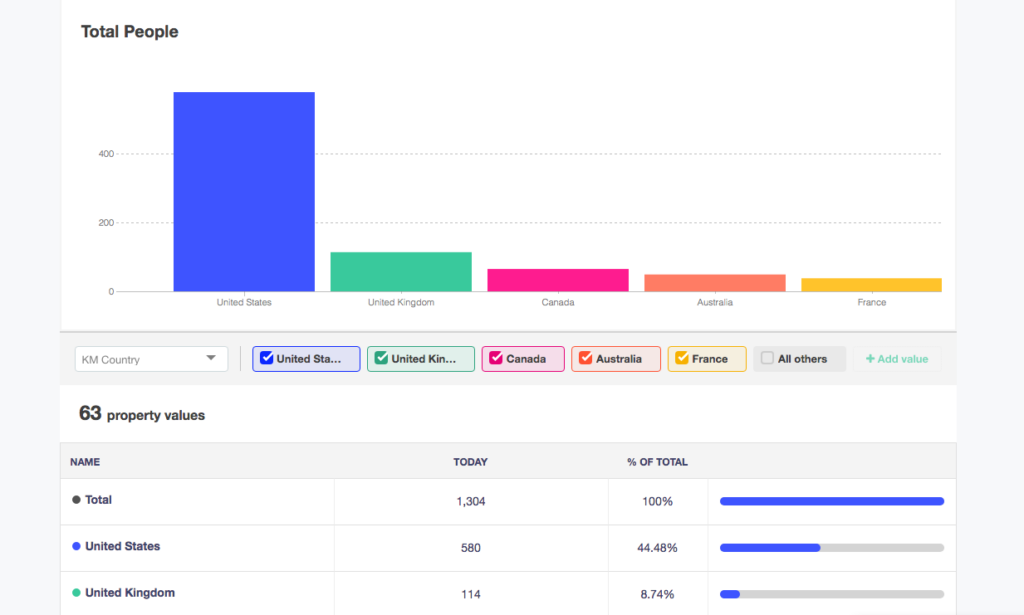Best Conversion Rate Optimization Software Shortlist
Here's my pick of the 10 best software from the 21 tools reviewed.
With so many different conversion rate optimization software available, figuring out which is right for you is tough. You know you want to ensure that your website is not just attracting visitors but effectively converting them into customers but need to figure out which tool is best. I've got you!
In this post I'll help make your choice easy, sharing my personal experiences using dozens of different conversion rate optimization tools with various teams and websites, with my picks of the best conversion rate optimization software.
Why Trust Our Software Reviews
Best Conversion Rate Optimization Software Summary
This comparison chart summarizes pricing details for my top conversion rate optimization software selections to help you find the best one for your budget and business needs.
| Tool | Best For | Trial Info | Price | ||
|---|---|---|---|---|---|
| 1 | Best for working with a comprehensive analytics ecosystem | Free plan available | From $259/month (billed annually) | Website | |
| 2 | Best for recording and analyzing website clicks via heat maps | 14-day free trial + free plan available | From $32/month | Website | |
| 3 | Best for uncovering user experience issues right away | Free plan available | From $39/month (billed annually) | Website | |
| 4 | Best for leveraging customer and user feedback from surveys | Free plan available | From $39.99/month (billed annually) | Website | |
| 5 | Best for discovering the tactics and strategies competitors are using | Free trial available | From $125/month (billed annually) | Website | |
| 6 | Best for breaking into the CVO movement | Free demo available | From $167/month (billed annually) | Website | |
| 7 | Best for creating landing pages without needing to code | 14-day free trial | From $199/month (billed annually) | Website | |
| 8 | Best for building a culture of experimentation | Free demo available | Pricing upon request | Website | |
| 9 | Best for understanding user behavior through in-depth analytics | 30-day free trial + free demo | From $299/month (billed annually) | Website | |
| 10 | Best for engaging visitors with beautiful on-site messages | 30-day money-back guarantee | Main plan is $495/one-time payment | Website |
-

Expedite Commerce
Visit Website -

Prisync
Visit WebsiteThis is an aggregated rating for this tool including ratings from Crozdesk users and ratings from other sites.4.7 -

QuickBooks Online
Visit WebsiteThis is an aggregated rating for this tool including ratings from Crozdesk users and ratings from other sites.4
Best Conversion Rate Optimization Software Review
Take a look at my list of conversion rate optimization software to get an overview of each platform, a snapshot of their inner workings, and a breakdown of their pricing. I’ve also called out some of their top features, as well as a few pros and cons to help you narrow down your decision.
As a behavior analytics platform, Mouseflow can help you optimize visitor experiences on your website to improve conversions with traditional and unique analytics tools. You can get access to session replay and heatmaps, as well as friction scores, form analysis, automatic tagging of problematic sessions, and customer feedback.
Why I picked Mouseflow: The thing that ensured this platform made my list was the variety in their heatmaps. You can build six types of heatmaps that activate on all your pages automatically and set up funnels so you can watch where and why web visitors may drop. With this feature, you see the number of clicks, click-rage, and click error on every page.
Mouseflow Standout Features and Integrations
Standout features include session replay that allows you to watch behavior of specific customer segments, conversion funnels that show you where visitors drop off, and heatmaps to analyze scrolling, hovering, and clicking.
Integrations include Adobe Analytics, Intellimize, Intercom, HubSpot CRM, Kameleoon, Optimizely, Segment, Tealium, WordPress, and Zendesk. Mouseflow offers over 40 integrations.
Pros and cons
Pros:
- Friendly layout and simple usability
- Feature explanations are straightforward
- Easy to set up and start using
Cons:
- Cannot exclude specific geo-traffic — only language-based exclusions
- Credit-based usage that goes fast with heavy website traffic
As a conversion rate optimization software that’s designed to help your business track and convert website visitors, Plerdy targets clicks and heat maps to provide you with visual data and interpretation through custom reports that monitor user behavior across different versions of the website. Track a customer’s digital experience to find opportunities for improvement.
Why I picked Plerdy: One of the reasons I chose this platform is because of the integrated SEO solution that encourages employees to track keywords, collect SEO tags across web pages, and access data for a variety of website versions. You can also use this feature to identify issues with the user experience, test site performance and design, or record interactions with various website elements.
Plerdy Standout Features and Integrations
Standout features include session replay software that helps you monitor the customer experience and Net Promoter Score tool to collect customer feedback.
Integrations include Brevo, eSputnik, Google Analytics 360, Google Search Console, Mailchimp, OpenCart, SendPulse, Shopify, WordPress, and UniSender. Plerdy is also available as a plug-in for most CMS platforms.
Pros and cons
Pros:
- Responsive and knowledgeable customer support
- Video tutorials for every need
- Simple user experience and navigation
Cons:
- User interface is a little outdated
- Form publishing can be a little clunky
While HotJar is an all-in-one digital marketing and experience platform, it can help you target CRO with solutions for marketing and product teams. Use HotJar to get buy-in for new ideas, spot opportunities for improvement, validate ideas with real user data, and uncover user experience issues more quickly.
Why I picked HotJar: This platform made my list because they specifically target the user experience, focusing on page speed issues, surprise bugs, and any frustrations expressed by your visitors. You can use scroll and heat maps to visualize user navigation, get feedback with surveys and suggestion boxes on the site, and connect directly with moderated user interviews.
HotJar Standout Features and Integrations
Standout features include a Funnels feature that helps you uncover conversion blockers and dashboards that give you a high-level view of user data.
Integrations include ContentSquare, Google Optimize, Jira, HubSpot, Microsoft Teams, MixPanel, Segment, Slack, Unbounce, and Zapier.
Pros and cons
Pros:
- Free plan with limited features
- Ideal platform for non-technical users
- Straightforward and quick implementation
Cons:
- Time-limited data storage capabilities
- The advanced features have a bit of a learning curve
This feedback platform is a unique CRO tool because it helps small and medium businesses gain the qualitative insight they need to improve their operations through website surveys. Qualaroo has features like cookie targeting, sentiment analysis, data streaming, and responses to help you engage with customers and users on another level. Using this tool, you can deliver more personalization and customization throughout your digital properties.
Why I picked Qualaroo: The thing that made this platform stand out to me is a feature called Qualaroo Nudges™. Qualaroo claims this feature is 10x more effective than email surveys because it operates directly on your website, encouraging users to give feedback at the optimal time through real-time prompts with context. You can design your own survey or use a template to streamline the process and get responses more quickly.
Qualaroo Standout Features and Integrations
Standout features include branded template designs with your logos and colors, contextualized feedback requests timed to pop up based on user behavior, and sentiment analysis that’s powered by IBM WATSON to track mood metrics and keywords.
Integrations include Eloqua, HubSpot CRM, Intercom, Mailchimp, Marketo Engage, Salesforce Sales Cloud, Slack, Tableau, Webhooks, and Zapier.
Pros and cons
Pros:
- Quick and easy setup without affecting site performance
- Offers no-code and low-code functionality
- Compatible with more integrations compared to Lucky Orange
Cons:
- Separates email and context surveys in plans
- Very limited features in the free version
Best for discovering the tactics and strategies competitors are using
SimilarWeb is a CRO tool that helps you get more in-depth data about your own performance, as well as competitor performance. You can conduct an analysis on any website or for any industry by searching the site in the SimilarWeb control panel. You’ll get full access to the analytics data of the site with metrics on visit duration, page views, monthly visits, bounce rate, and geographic traffic details.
Why I picked SimilarWeb: I like this tool because it helps you stay up-to-date on changing trends within the industry and keep up with your competitors with direct comparisons between sites. Using the control panel, you can generate keywords, identify new referral traffic opportunities, and find new partners for your affiliate strategy.
SimilarWeb Standout Features and Integrations
Standout features include website accreditation through validating your site analytics, TrafficMeter™ browser extension for getting objective traffic data, and sales intelligence with lead generation and enrichment.
Integrations include AdClarity, Adverity, Dataddo, AT Internet Web Analytics, Google Analytics 360, Salesforce Marketing Cloud, Salesforce Sales Cloud, and Supermetrics.
Pros and cons
Pros:
- Robust customer support assistance
- Intuitive and reliable user navigation
- Very user-friendly interface
Cons:
- High pricing for small businesses
- Limited Android and iOS data accuracy
OmniConvert is a website optimization platform that focuses on A/B testing, personalization experiments, and surveys. They’re focusing on a different type of optimization that they’re calling CVO, or Customer Value Optimization. This conversion strategy is all about turning one-time buyers into lifetime relationships that transition you from the top of the funnel to the entire customer journey.
Why I picked OmniConvert: One thing that caught my eye about this platform is the REVEAL feature, which uses automated RFM segmentation to help you identify the most valuable customers and categorize the rest of your buyers. Now, you can market to each customer segment with appropriate strategies and stimulate repeat buying behavior.
OmniConvert Standout Features and Integrations
Standout features include CRO tools to test your insights and run experiments, ecommerce customer analytics platform for monitoring and nurturing customers, and customer survey tools to get customer feedback.
Integrations include ActiveCampaign, Google Ads, Gorgias, HotJar, Klaviyo, Mailchimp, Meta Ads, Sendgrid, Shopify, and Zapier.
Pros and cons
Pros:
- Very quick to set up and start using
- Simple user interface for easy navigation
- Tests and surveys are very customizable
Cons:
- Implementation uses a cookie-consent format
- User interface is a little dated
This CRO platform has a singular focus on building and optimizing personalized landing pages at scale to improve ROI and campaign results. InstaPage ensures you don’t need a technical professional or a developer with their user-friendly interface that allows you to drag-and-drop every element of your new landing page into place quickly and easily.
Why I picked InstaPage: This tool caught my attention because they leverage AI to create and test unique landing pages even faster than when you build them yourself. With AI-prompted page variations, you can create targeted landing pages for every audience and ad group without having to do any of the build work yourself. Plug in your KPIs and get a custom design right away.
InstaPage Standout Features and Integrations
Standout features include widgets that add layers of functionality to your page with multimedia elements and chatbot plugins, as well as the AdMap® feature, which visualizes your campaigns by connecting a unique post-click page to each of your ads.
Integrations include Google Analytics 360, HubSpot Marketing Hub, Mailchimp, PayPal, Salesforce Sales Cloud, Shopify, Stripe, WordPress, Zapier, and Zendesk Suite.
Pros and cons
Pros:
- Design recommendations for more professional results
- Easy to use with no technical knowledge
- Multiple domain capabilities on the same account
Cons:
- Limited performance as permanent web pages
- Resolution for bug fixes is a little slow
The web experimentation arm of Optimizely helps your team conduct experiments in a no-code and low-code environment that frees you from having to rely on developers in order to make website changes, test user interactions, and personalize user experiences. With a single workspace for all collaborators, Optimizely provides more control, visibility, and teamwork across all experiments.
Why I picked Optimizely: This platform caught my eye because they offer experiment lifecycle management that allows you to use test plans to get the data you need for more informed decisions when developing an idea into an experiment. You can test roadmaps for a more comprehensive view of what it would mean to run planned experiments through list, timeline, and board views.
Optimizely Standout Features and Integrations
Standout features include feature flagging and rollouts to merge and deploy code at any time without needing to actually release the changes and omnichannel experimentation that ensures unified user experiences across all apps and devices.
Integrations include Eloqua, Figma, FullContact, Heap, Microsoft Teams, Milanote, Pardot ROI Analytics, Salesforce ROI Analytics, Sprout Social, and YouTube.
Pros and cons
Pros:
- Complete customization options for surveys and messages
- Straightforward interface and navigation
- Very easy to learn and use
Cons:
- Not every feature is low-code
- Confusing walkthroughs and video demos
Best for understanding user behavior through in-depth analytics
This conversion rate optimization software goes beyond just analyzing the numbers of your website traffic. With Kissmetrics, you can translate every number into a customer, user, or significant behavior that can contribute to decision-making for improving your marketing campaigns with better landing pages, CTAs, and user interactions.
Why I picked Kissmetrics: This platform caught my eye because of the robust lead generation tools. With Kissmetrics, you can create and analyze conversion funnels with real users to improve your website conversion rates. Find out how users arrive at your site, where people are dropping out of your funnels, and what products are most popular.
Kissmetrics Standout Features and Integrations
Standout features include event tracking based on custom actions and triggers and a Campaigns editor with simple drag-and-drop functionality.
Integrations include HubSpot CRM, HubSpot Marketing Hub, LiveChat, Mailchimp, Rippling, Shopify, Slack, WordPress, Wrike, and Zapier.
Pros and cons
Pros:
- One-stop shop for all analytics
- Quick and responsive customer service team
- Easy to onboard with existing apps
Cons:
- Data analytics can take up to 20 minutes
- No AI or heat map capabilities
ConvertBox is a simple CRO tool that enhances personalization with segmentation to maximize conversations, lead capture for opt-in forms that help you collect leads, and targeted messages on-site that are based on visitor behavior. With this platform, you can focus on targeting the right visitors, building lists, and tracking all user interactions with your site.
Why I picked ConvertBox: A unique feature that makes this platform a standout is the Callout Modal, which strives to deliver more links on a specific offer and generates more leads with personalized interactions based on templates for announcements, segmentation, limited and trial offers, webinars, video messages, and simple message.
ConvertBox Standout Features and Integrations
Standout features include multi-step funnel building to deliver highly personalized content to users and customizable form fields, dropdowns, and checkboxes to collect more targeted user data.
Integrations include ActiveCampaign, Drop, Encharge, Gist, HubSpot, Klaviyo, Mailchimp, MooSend, OntraPort, and Webhooks.
Pros and cons
Pros:
- Tool is constantly growing and evolving
- Builder is simple and easy to use
- User-friendly navigation and experience
Cons:
- Limited marketing automation tools
- Templates offer only basic designs
Other Conversion Rate Optimization Software
Even though I provided you with a comprehensive list of ecommerce CRO tools above, there were a few more I couldn’t ignore. Check out these additional CRO tools that deserve an honorable mention.
- VWO Testing
For fine tuning all your experimentation and testing
- Hello Bar
For easy installation with no coding required
- CRM Creatio
For 360 customer interaction tracking
- WebEngage
For promoting data-driven CRO decisions based on live analytics and seamless data integrations
- Lucidspark
For leveraging teamwork on virtual whiteboards that allow your teams to share ideas
- ClickFunnels
For enhancing your conversion funnel through A/B testing and in-depth analytics
- Intercom
For automating customer service and chat interactions with AI for first-touch conversations
- Totango
For transforming the customer journey into a product with defined critical touchpoints and pre-built components
- BuzzSumo
For optimizing your influencer strategy to leverage social media interactions for conversions
- Glassbox
For analyzing customer behaviors with tagless capture data to make changes to your CRO strategy
- Contentsquare
For real-time insights that provide actionable solutions for immediate digital improvements
Selection Criteria For Conversion Rate Optimization Software
Wondering how I chose each of the platform options above? Here’s a short summary of the main selection and evaluation criteria I used to develop my list of the best conversion rate optimization software for this article:
Core Functionality (25% of total score)
To be considered for inclusion in this list, each solution had to fulfill these common use cases:
- Conduct A/B testing
- Analyze user behavior
- Track conversion metrics
- Personalize user experiences
- Integrate with existing platforms
Additional Standout Features (25% of total score)
To help further narrow down the competition, I also looked for unique features, such as:
- AI-driven insights
- Heatmaps for user tracking
- Advanced segmentation options
- Multivariate testing
- Dynamic content personalization
Usability (10% of total score)
To get a sense of the usability of each system, I considered the following:
- Intuitive user interface
- Ease of navigation
- Customizable dashboards
- Clear reporting tools
- Minimal learning curve
Onboarding (10% of total score)
To evaluate the onboarding experience for each platform, I considered the following:
- Availability of training videos
- Interactive product tours
- Access to templates and guides
- Webinars and live training sessions
- Responsive chatbots for assistance
Customer Support (10% of total score)
To assess each software provider’s customer support services, I considered the following:
- 24/7 support availability
- Access to a knowledge base
- Availability of live chat
- Response time for inquiries
- Quality of support documentation
Value For Money (10% of total score)
To evaluate the value for money of each platform, I considered the following:
- Competitive pricing
- Range of features offered
- Flexible pricing plans
- Free trial availability
- Cost-effectiveness compared to competitors
Customer Reviews (10% of total score)
To get a sense of overall customer satisfaction, I considered the following when reading customer reviews:
- User satisfaction ratings
- Commonly reported issues
- Praise for specific features
- Feedback on customer support
- Overall sentiment trends
How to Choose Conversion Rate Optimization Software
It’s easy to get bogged down in long feature lists and complex pricing structures. To help you stay focused as you work through your unique software selection process, here’s a checklist of factors to keep in mind:
| Factor | What to Consider |
|---|---|
| Scalability | Will the tool grow with your business? Consider future needs and whether the software can handle increased traffic and data as your company expands. |
| Integrations | Does it work with your existing tools? Check for compatibility with your CRM, email marketing, and analytics platforms to ensure seamless data flow. |
| Customizability | Can you tailor it to your needs? Look for options to customize dashboards, reports, and testing parameters to fit your unique business processes. |
| Ease of Use | Is it user-friendly for your team? Evaluate the interface and user experience to ensure your team can easily navigate and leverage the tool without extensive training. |
| Implementation and Onboarding | How easy is it to get started? Consider the time and resources needed for setup, and whether support is available during the onboarding phase. |
| Cost | Does it fit your budget? Review pricing plans, hidden fees, and whether there’s a free trial to test the tool's value before committing. |
| Security Safeguards | How secure is your data? Ensure the software complies with industry standards for data protection and offers encryption and regular security updates. |
| Support Availability | Will you get help when needed? Check if there's 24/7 support, live chat, or a dedicated account manager to assist with any issues. |
What Is Conversion Rate Optimization Software?
Conversion rate optimization (CRO) software is a set of tools that help businesses improve the rate at which visitors to their website or digital platform complete desired actions, such as making a purchase or signing up for a service.
It analyzes user behavior on a website, conducts tests like A/B testing, and tracks various performance metrics to identify areas for improvement. The software provides insights and recommendations on how to optimize web pages for better user engagement and higher conversion rates.
Features
When selecting conversion rate optimization software, keep an eye out for the following key features:
- A/B testing: Allows you to compare different versions of web pages to identify which one performs better, helping you make data-driven decisions.
- User behavior analysis: Tracks and analyzes how users interact with your site, providing insights to improve user experience and increase conversions.
- Personalization: Offers tailored content and recommendations to users based on their behavior and preferences, enhancing engagement and conversion rates.
- Heatmaps: Visualizes user interaction on your site, showing where visitors click and scroll, helping identify areas for improvement.
- Multivariate testing: Tests multiple variables at once to determine the best combination for achieving higher conversion rates.
- Integration capabilities: Ensures seamless data flow with existing tools like CRM and analytics platforms, enhancing efficiency and insights.
- Customizable dashboards: Provides flexible reporting options for tracking key metrics and performance in a way that suits your business needs.
- Security safeguards: Protects user data through encryption and regular updates, ensuring compliance with industry standards.
- Training and support resources: Offers tutorials, webinars, and responsive support to help your team effectively use the software.
- Scalability: Supports business growth by handling increased traffic and data as your company expands.
Benefits
Implementing conversion rate optimization software provides several benefits for your team and your business. Here are a few you can look forward to:
- Increased conversions: By using A/B testing and personalization, you can turn more visitors into customers, boosting sales and revenue.
- Improved user experience: Features like user behavior analysis and heatmaps help you understand visitor interactions, leading to a more engaging website experience.
- Data-driven decisions: Multivariate testing and customizable dashboards provide insights that inform strategic choices, reducing guesswork.
- Efficient integration: Seamless integration with existing tools ensures a smooth workflow and comprehensive data analysis, saving time and resources.
- Enhanced security: Security safeguards protect user data, ensuring compliance and building trust with your audience.
- Scalability: As your business grows, the software can handle increased traffic and data, supporting long-term success.
- Ongoing support: Access to training and support resources helps your team effectively use the software, maximizing its value.
Costs and Pricing
Selecting conversion rate optimization software requires an understanding of the various pricing models and plans available. Costs vary based on features, team size, add-ons, and more.
The table below summarizes common plans, their average prices, and typical features included in conversion rate optimization software solutions:
Plan Comparison Table for Conversion Rate Optimization Software
| Plan Type | Average Price | Common Features |
|---|---|---|
| Free Plan | $0 | Basic A/B testing, limited user behavior analysis, and basic reporting. |
| Personal Plan | $10-$30/user/month | Advanced A/B testing, user behavior analysis, heatmaps, and limited integrations. |
| Business Plan | $50-$150/user/month | Multivariate testing, full user behavior analysis, extensive integrations, and customizable dashboards |
| Enterprise Plan | $200+/user/month | Comprehensive testing features, full integration capabilities, advanced security, and dedicated support. |
Conversion Rate Optimization Software FAQs
Need more information before making your final decision? Dive into these frequently asked questions to help you learn more about conversion rate optimization.
What is the main purpose of conversion rate optimization software?
The main purpose is to increase the percentage of website visitors who complete a desired action, like making a purchase. By using tools like A/B testing and user behavior analysis, you can identify what changes will improve user engagement and conversions. This helps in making data-driven decisions to optimize your website effectively.
Who uses conversion rate optimization software?
Anyone in the ecommerce sphere could use conversion rate optimization software, especially if you’re trying to increase revenue and perform better against competitors. Your marketing, sales, product, and reporting teams will find many useful tools under the CRO umbrella, including testing, lead generation, segmentation, email marketing, SEO, and form analytics.
What tools do you use to optimize conversions?
Some of the most common tools for conversion optimization include:
- Heat maps
- Google analytics
- Web analytics tools
- Scroll maps
- Pop-up software
- Session replay
- Path reports
- Visual editors
- Templates
Can conversion rate optimization software integrate with my existing tools?
Yes, most conversion rate optimization software can integrate with existing tools like CRM systems, email marketing platforms, and analytics tools. When evaluating options, check for compatibility with your current software stack. This ensures a smooth data flow and helps your team maintain consistency across different platforms.
How do I know if my business needs conversion rate optimization software?
If you’re looking to increase sales, improve user engagement, or understand customer behavior better, you might benefit from conversion rate optimization software. Businesses with high web traffic but low conversion rates often see the most significant improvements. Consider your goals and current performance metrics to decide if it’s the right fit.
Is conversion rate optimization software suitable for small businesses?
Yes, there are options tailored for small businesses with limited budgets. Many tools offer scalable features, starting with basic plans that include essential functionalities like A/B testing and analytics. As your business grows, you can upgrade to more advanced plans with additional features to suit your evolving needs.
What’s Next
With such a comprehensive overview of the best CRO options available, you should have a better handle on what to look for to meet your needs. Continue your research with the trial offers available from many of these platforms to determine which performs best within your workflow and tech stack.
If you're in the process of researching conversion rate optimization software, connect with a SoftwareSelect advisor for free recommendations.
You fill out a form and have a quick chat where they get into the specifics of your needs. Then you'll get a shortlist of software to review. They'll even support you through the entire buying process, including price negotiations.

